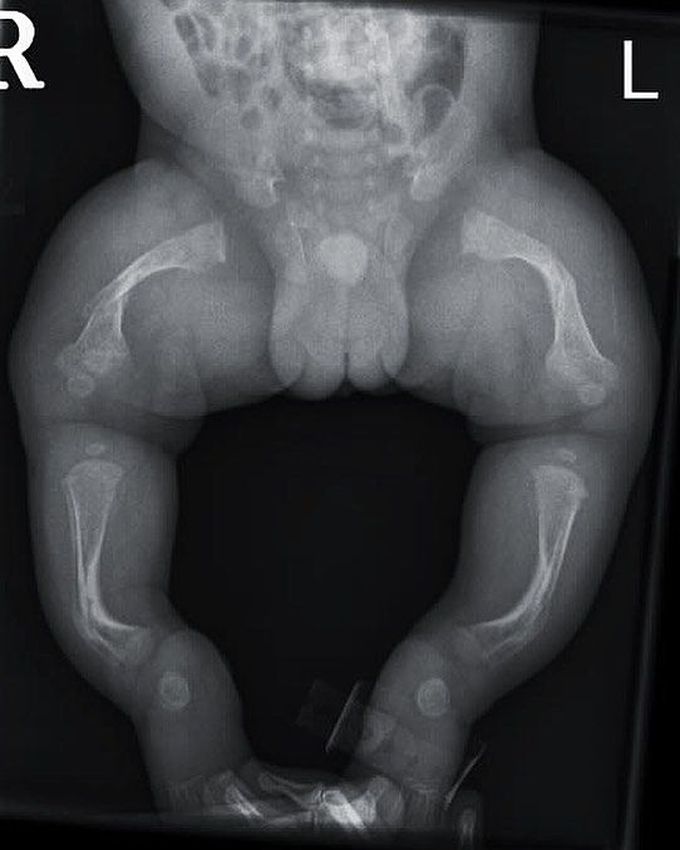


Osteogenesis imperfecta
Born with soft bones! This is a neonatal frontal X-Ray of the pelvis and lower extremities demonstrating bowing of the femurs and tibias osteogenesis imperfecta! All bones are over-transparent suggesting osteopenia. Long bones are deformed due to muscles growth, which osteopenia cannot correct. Multiples fractures of different ages are seen. Osteogenesis imperfecta (OI) or Brittle Bone Disease is a congenital, genetic, connective tissue disorder caused by type I collagen gene mutation. In bone, type I collagen contributes to tensile and torsional strength. Therefore, patients with osteogenesis imperfecta have decreased bone strength and flexibility that results in frequent fractures from minor trauma. The hallmark feature is osteoporosis and fragile bones that fracture easily, as well as, joint hypermobility due to type I collagen defects in tendons and ligaments, blue sclera (from scleral thinning causing visualisation of underlying vessels), dental fragility or dentinogenesis imperfecta (discoloured teeth due to dentin exposure), and hearing loss (from dislocation or fracture of the ossicles). Clinical symptoms are highly variable, ranging from a mild form with no deformity, normal stature, and few fractures to a form that is lethal during the perinatal period. The pathology is a disturbance in the synthesis of type I collagen, which is the predominant protein of the extracellular matrix of most tissues. In bone, this defect results in osteoporosis, thus increasing the tendency to fracture. Besides bone, type I collagen is also a major constituent of dentin, sclerae, ligaments, blood vessels, and skin. With good medical management and supportive care, the majority of people who have OI will lead healthy, productive lives and can expect an average life span. Growth hormone helps growth-responsive children and treatment with bisphosphonates is aimed at increasing bone density and decreasing bone pain and fracture risk. Orthopedic surgery, physical therapy, and occupational therapy help prevent fractures and improve function. Cochlear implantation is indicated in cases of hearing loss.
Hemodynamic stimuli&nonhemodynamic stimuliEffects of sugar on teeth


